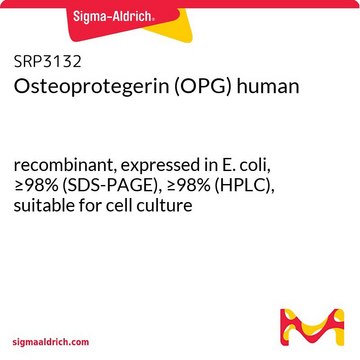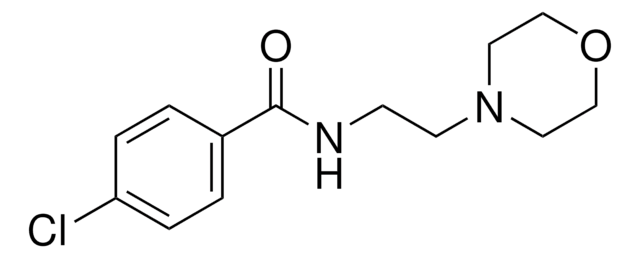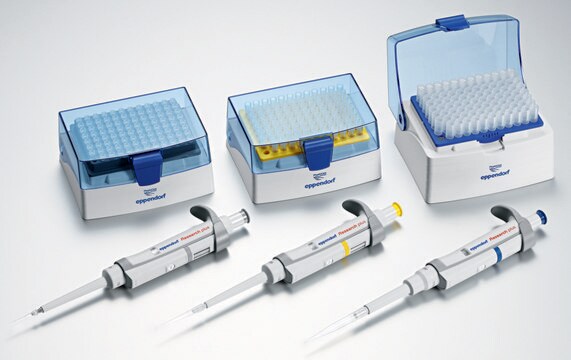Kluczowe dokumenty
O8137
Osteoprotegerin/Fc Chimera from mouse
>95% (SDS-PAGE), recombinant, expressed in NSO cells, lyophilized powder
Synonim(y):
OCIF, OPG
About This Item
Polecane produkty
pochodzenie biologiczne
mouse
Poziom jakości
rekombinowane
expressed in NSO cells
Próba
>95% (SDS-PAGE)
Formularz
lyophilized powder
siła działania
25-50 ng/mL ED50
masa cząsteczkowa
100 kDa by SDS-PAGE (reducing)
calculated mol wt 70.9 kDa
opakowanie
pkg of 100 μg
zanieczyszczenia
endotoxin, tested
numer dostępu UniProt
temp. przechowywania
−20°C
ciąg SMILES
CCCCCCCCCCC#CCCCCCC(O)=O
InChI
1S/C18H32O2/c1-2-3-4-5-6-7-8-9-10-11-12-13-14-15-16-17-18(19)20/h2-10,13-17H2,1H3,(H,19,20)
Klucz InChI
XXUPLYBCNPLTIW-UHFFFAOYSA-N
informacje o genach
mouse ... Tnfrsf11b(18383)
Opis ogólny
Działania biochem./fizjol.
Postać fizyczna
Komentarz do analizy
Kod klasy składowania
11 - Combustible Solids
Klasa zagrożenia wodnego (WGK)
WGK 3
Temperatura zapłonu (°F)
Not applicable
Temperatura zapłonu (°C)
Not applicable
Wybierz jedną z najnowszych wersji:
Masz już ten produkt?
Dokumenty związane z niedawno zakupionymi produktami zostały zamieszczone w Bibliotece dokumentów.
Nasz zespół naukowców ma doświadczenie we wszystkich obszarach badań, w tym w naukach przyrodniczych, materiałoznawstwie, syntezie chemicznej, chromatografii, analityce i wielu innych dziedzinach.
Skontaktuj się z zespołem ds. pomocy technicznej






![Bis[2-(2-chloroethoxy)ethyl] ether ≥99.0% (T)](/deepweb/assets/sigmaaldrich/product/structures/333/320/46ff3398-7a62-42b5-b9bc-0a3d0cb0429c/640/46ff3398-7a62-42b5-b9bc-0a3d0cb0429c.png)
![Chloro(4-cyanophenyl)[(R)-1-[(S)-2-(dicyclohexylphosphino)ferrocenyl]ethyldicyclohexylphosphine]nickel(II)](/deepweb/assets/sigmaaldrich/product/structures/308/161/648149e1-191f-48a0-af54-81c827b98fc9/640/648149e1-191f-48a0-af54-81c827b98fc9.png)
